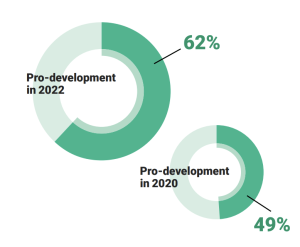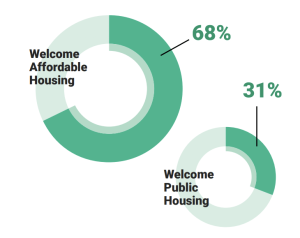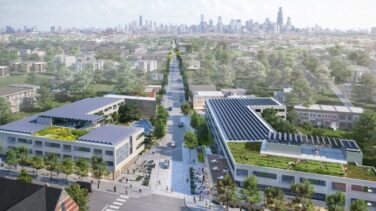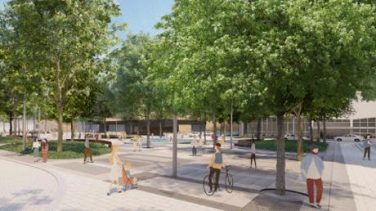
Our survey results are in, and they offer quantitative evidence for what we’ve been hearing anecdotally from clients: More people support real estate development now than they did in 2020. 62% of this year’s respondents – all of whom are registered community members on the coUrbanize platform — described themselves as pro-development, compared to 49% of respondents in 2020. 
That’s quite a jump. We believe the increase stems from three factors: the pandemic, the worsening housing crisis, and the social changes of the past two years. It’s telling that few respondents consider their community affordable – only 20%. And not surprising, therefore, that the projects most welcomed among respondents centered on housing.
The breakdown is enlightening. Below are the percentages of support from respondents by project type:
- Affordable housing for senior citizens – 76%
- Workforce housing for teachers, firefighters, and public servants – 69%
- Affordable housing for people with disabilities – 66%
- Single-family housing for middle class families – 64%
- Affordable housing for veterans – 63%
Another popular category was public transportation (62%). This, too, may be tied to wider recognition of social inequities and to the housing crisis. People want to live close to where they work if possible, but rents and prices are not affordable in city centers where many jobs are located. And gasoline, of course, is very expensive. Here’s where the demand for public transportation comes into play.
Respondents were less enthusiastic about low-income housing (50%) and public housing (31%). In our view, support for these categories suffers because of systemic racism, unconscious biases, and misinformation. Our ongoing objective is to deflect such attitudes through education and communication. We want to reach all stakeholders – not just the vocal NIMBYs.

Another interesting facet of the survey is that all of the respondents are following or have followed progress of projects in their communities on dedicated coUrbanize sites. Many developers shy away from engaging with communities about proposed projects for fear of fomenting NIMBYist attitudes. But these respondents are clearly engaged and largely supportive of development. Developers should take note.
That said, the methods of engagement can make a big difference. They must extend beyond a public planning meeting that only a few people have time or ability to attend. Those few people are often the vocal NIMBYists, and they tend to be wealthier, whiter, and more negative than the community at large. By offering multiple options for engagement, both online or offline, and in multiple languages, you can reach a much more representative group of stakeholders – stakeholders who are typically far more supportive than the NIMBYist regulars.
To conclude: Our survey shows that positive sentiment toward development is rising among engaged communities and suggests that the same is true of the population at large. Now that people are more attuned to the lack of affordable housing and the inequities that persist in our society, it’s the ideal moment for developers to embrace – rather than shy away from – engagement efforts. The more equitable and meaningful the engagement, the better the outcomes for developers and communities.


